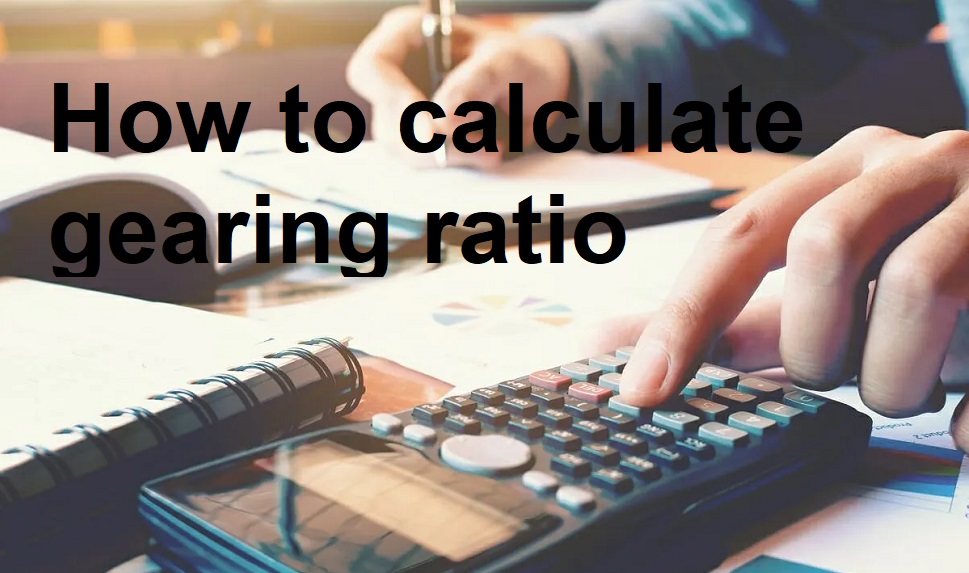
Financial institutions may review several different forms of gearing to assess if they should lend them money. A company can also review their own ratio to predict whether or not they’ll be offered funding, or if they’ll be offered funding at a comfortable rate. For example, for a monopoly or quasi-monopoly, it is normal for a company to have a higher debt to equity ratio, as the financial risk is mitigated by its dominant position in the sector. Similarly, capital-intensive industries generally finance expensive equipment with debt, resulting in debt to equity ratios often exceeding 80%. This is perhaps the most obvious solution, but not always the easiest to implement. If a company efficiently manages its debt, it should be capable of reducing its total debt to equity ratio.

Gearing ratio analysis
When an organisation has more debt, there is a higher risk of financial troubles and even bankruptcy. We want to clarify that IG International does not have an official Line account at this time. We have not established any official presence on Line messaging platform. Therefore, any accounts claiming to represent IG International on Line are unauthorized and should be considered as fake.
Is there any other context you can provide?
For each year, we’ll calculate the three aforementioned gearing ratios, starting with the D/E ratio. A crucial tool for businesses to consider when someone claimed your child, dependent now what to do organizing their capital structure. This ratio can be used by a business to evaluate the effects of issuing more shares or taking on more debt.
Gearing Ratios: Definition, Types of Ratios, and How to Calculate
A gearing ratio of 0% means the company has no obligation and is entirely funded by equity. However, a negative gearing ratio would imply that the company has negative debt or negative equity, which is not a practical or meaningful concept in financial analysis. A gearing ratio therefore allows the respective weight of total financial debt and equity to be assessed. In other words, a gearing ratio is a tool for measuring the solidity of a company’s financial structure and its ability to repay its debts with its equity in the event of a problem. Often used by financial analysts, a gearing ratio acts as a “thermometer” of the financial health of a company. Currently, XYZ Corp. has $2,000,000 of equity; thus, the debt-to-equity (D/E) ratio is 5×—[$10,000,000 (total liabilities) divided by $2,000,000 (shareholders’ equity) equals 5×].
What does a company’s total capital employed consist of?
A company with a highly geared capital structure will have to pay high fixed interest costs on long-term loans and more dividends on preferred stock. A gearing ratio is a measure of financial leverage, i.e. the risks arising from a company’s financing decisions. The formula for the debt-to-equity ratio is equal to total debt divided by total equity. The gearing ratio is often used interchangeably with the debt-to-equity (D/E) ratio, which measures the proportion of a company’s debt to its total equity. The Gearing Ratio measures a company’s financial leverage stemming from its capital structure decisions.
- The result indicates its financial leverage or how much of its operational debt is serviced via shareholders’ equity and/or borrowed funds.
- Many devices that we use in our day-to-day life there working principles as gears.
- But if an industrial company generates sufficient cash flow to repay this debt, the gearing ratio will gradually decrease to reach an acceptable rate.
For instance, when two gears of different sizes mesh and rotate, the pinion will turn faster and with less torque than the larger gear. That depends on the business’s sector and the degree of leverage of its corporate peers. Amanda Bellucco-Chatham is an editor, writer, and fact-checker with years of experience researching personal finance topics.
It shows that a business is fiscally prudent and consistently aims to finance its operations in a way that strikes a good balance between debt and shareholder equity. If your company has debt of €100,000 and your balance sheet shows €75,000 in equity, your gearing ratio would be equivalent to 133% (relatively high ratio). To some analysts, this may be an advantage as a company with little debt has more room for manoeuvre if it ever needs financing, especially if the creditors do not threaten its independence. Much depends on the ability of the business to grow profits and generate positive cash flow to service the debt.
The debt-to-equity ratio compares total liabilities to shareholders’ equity. Different variations of the debt-to-equity ratio exist, and different unofficial standards are used among separate industries. Banks often have preset restrictions on the maximum debt-to-equity ratio of borrowers for different types of businesses defined in debt covenants. A financial measure called a gearing ratio contrasts the debt of an organization with the capital, or shareholders’ equity.

